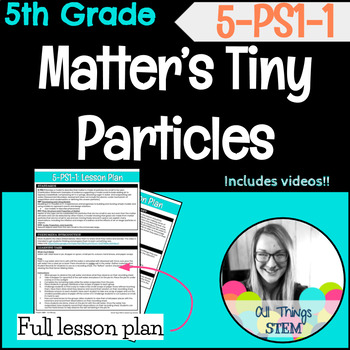5th Grade NGSS - Matter's Tiny Particles - Full Unit with Videos
- PDF
Description
Engaging, hands-on science unit that includes:
- Phenomena Introduction Video
- Full lesson plan with facilitation instructions
- Hands-on Tasks with Recording Sheets
- Vocabulary Cards for Word Wall
- Sense-Making Video
- Claim-Evidence-Reasoning Assessment
Aligned to the following standards:
5-PS1-1 - Develop a model to describe that matter is made of particles too small to be seen. [Clarification Statement: Examples of evidence supporting a model could include adding air to expand a basketball, compressing air in a syringe, dissolving sugar in water, and evaporating salt water.] [Assessment Boundary: Assessment does not include the atomic-scale mechanism of evaporation and condensation or defining the unseen particles.]
SEP: Developing and Using Models Modeling in 3–5 builds on K–2 experiences and progresses to building and revising simple models and using models to represent events and design solutions. Use models to describe phenomena.
DCI: PS1.A: Structure and Properties of Matter Matter of any type can be subdivided into particles that are too small to see, but even then the matter still exists and can be detected by other means. A model showing that gases are made from matter particles that are too small to see and are moving freely around in space can explain many observations, including the inflation and shape of a balloon and the effects of air on larger particles or objects.
CCC: Scale, Proportion, and Quantity Natural objects exist from the very small to the immensely large.





